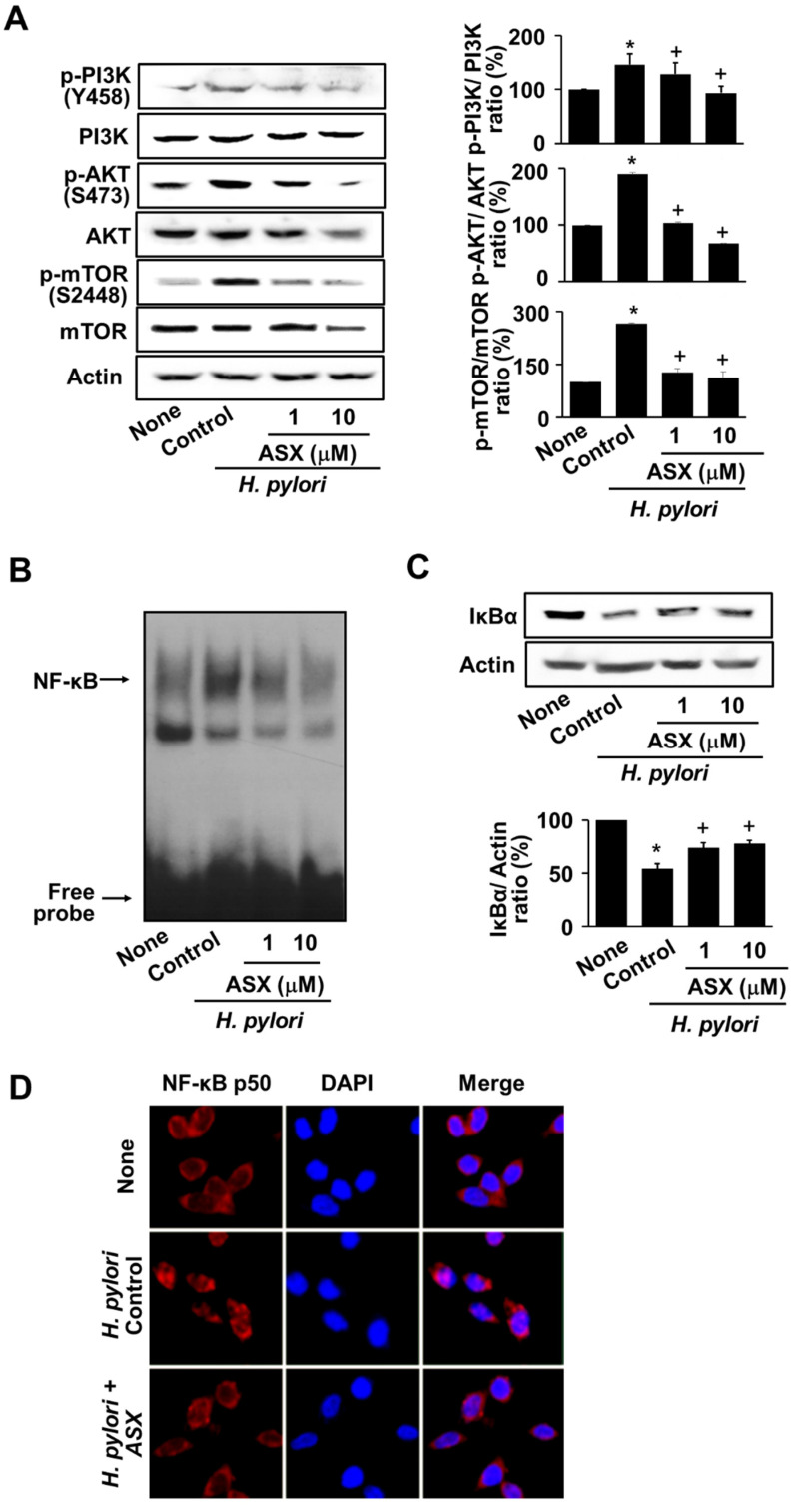Figure 4.
Astaxanthin suppressed activation of PI3K, AKT, mTOR, and NF-κB in H. pylori-infected cells. Cells were pretreated with the indicated concentrations of astaxanthin (ASX) for 3 h and infected with H. pylori for 8 h. (A) Phospho-specific and total forms of PI3K, AKT, and mTOR were examined using western blot analysis. Actin served as a loading control control (left panel). The densitometry data represent the mean ± standard error (SE) from three immunoblots and are shown as the relative density of p-PI3K, p-AKT, or p-mTOR protein bands normalized to total forms of PI3K, AKT, or mTOR (right panel). * p < 0.05 vs. ‘None’ (uninfected cells without ASX treatment); + p < 0.05 vs. ‘Control’ (infected cells without ASX treatment). (B) The DNA-binding activity of NF-κB was measured via electrophoretic mobility shift assay (EMSA). (C) IκBα levels were examined using western blot analysis. Actin served as a loading control (upper panel). The densitometry data represent the mean ± standard error (SE) from three immunoblots and are shown as the relative density of protein bands normalized to actin (lower panel). * p < 0.05 vs. ‘None’ (uninfected cells without ASX treatment); + p < 0.05 vs. ‘Control’ (infected cells without ASX treatment). (D) Cells and nuclei were stained with anti-NF-κB p50 antibody (red) and DAPI (blue), respectively. ASX, astaxanthin.

